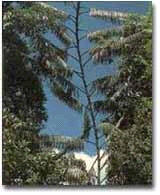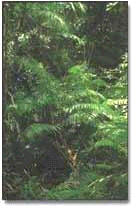|







| |
-
Growing in the tropics and sub-tropics, rattan, or
cane as it is commonly known, is a ready source for the cane furniture
industry. It is collected from the wild forests throughout
Southeast Asia and is the most
vital forest produce after timber. Its social significance is no less. It
provides sustainable income to some of the most disadvantaged segments of
people living in and on the fringes of forests.
-
Because of its strength and flexibility, the
stem of rattan is used extensively in the manufacture of cane furniture and in
matting. Other uses of rattan, mostly in the rural areas, are for cordage, in
construction, basketry, thatching and matting. Long before the Portuguese
discovered the trade route to the East and took back rattan (along with the
other wonder, spices) it had been an invaluable part of the life of the rural
folk throughout
Southeast Asia.
-
Rattan is increasing in popularity because it is easy
to work with, requiring only simple tools and low-cost machines. It lends itself to
uncomplicated labor-intensive processing and thus generates diverse
employment, and its manufacturing costs are minimal. It is environmentally friendly and biodegradable: it
"hugs" the trees and saves them from the logger's axe by providing equal or
more benefit than the companion tree, without disturbing the natural habitat.
-
Trade
in rattan has burgeoned into a multimillion-dollar industry. Trade in raw
rattan worldwide
was in the order of $50 million. By the time the finished product reaches the
consumer, its value has increased to $1.2 billion. Overall, the global trade
is worth $4 billion and domestic trade $2.5 million.
-
In the 1970s,
Indonesia
became the major supplier of rattan, accounting for nearly 70 percent of the
entire global trade. Since then, the trade profile had undergone dramatic
changes. The value of export has increased a stupendous 250-fold in just 17
years in Indonesia. The rise has been 75-fold in 15 years in the Philippines,
23-fold in 9 years in Thailand and 12-fold in 8 years in Malaysia. Indonesia,
the market leader, has now set its target for exports at $700 million (US),
while Singapore aims at a target of $60 million.


The International Network for Bamboo and
Rattan
|
